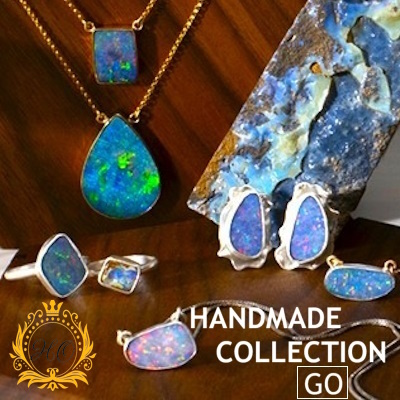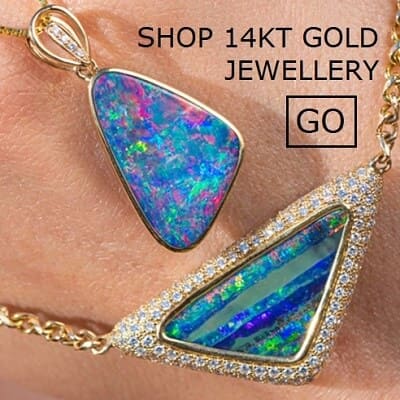7 Exquisite Examples of Rare Opals for Collectors
Posted by AOD on 25th Oct 2025
7 Exquisite Examples of Rare Opals for Collectors

Did you know that Australia produces over 90 percent of the world’s precious opals? These extraordinary gems aren’t just beautiful—they hold geological and historical secrets millions of years old. From Lightning Ridge’s black opals to the hidden treasures of Queensland, each opal variety reveals a story of color, rarity, and artistry. Discover how these dazzling stones captivate collectors and why they remain some of the most sought-after gemstones on Earth.
Table of Contents
- 1. Black Opals: The Crown Jewel from Lightning Ridge
- 2. Boulder Opals: Nature’s Art from Queensland
- 3. Crystal Opals: Discovering Exceptional Clarity
- 4. Fire Opals: Unveiling The Vibrant Australian Blaze
- 5. Matrix Opals: The Beauty Within The Stone
- 6. Yowah Nuts: Hidden Treasures Of Queensland
- 7. Rare Doublets And Triplets: Maximising Opal Rarity
Quick Summary
| Takeaway | Explanation |
|---|---|
| 1. Black opals feature unmatched color intensity. | The dark body tone enhances vibrant colors, making black opals extraordinarily sought after in the gemstone market. |
| 2. Boulder opals are unique due to their matrix. | Each boulder opal has opal embedded in ironstone, creating one-of-a-kind pieces that stand out to collectors. |
| 3. Crystal opals offer exceptional clarity and play-of-color. | Their translucent nature enhances colors and light interaction, making them visually striking and highly valued. |
| 4. Fire opals showcase warm, vibrant hues. | The range of colors reflects their volcanic origin, adding to their allure for gemstone collectors and enthusiasts. |
| 5. Doublets and triplets maximize fragile opals. | These composite stones enhance durability and visual appeal, providing more options for collectors interested in opal jewelry. |
1. Black Opals: The Crown Jewel from Lightning Ridge
Black opals from Lightning Ridge represent the absolute pinnacle of opal excellence in the gemstone world. These extraordinary stones are not just gems but geological marvels that capture the imagination of collectors worldwide.
Located in the rugged New South Wales outback, Lightning Ridge produces black opals with unparalleled color intensity and depth. According to the Gemological Institute of America, these opals are characterized by their dark body tone that dramatically enhances their vibrant play-of-color. This unique characteristic makes them extraordinarily rare and highly prized among collectors.
The magic of Lightning Ridge black opals lies in their formation. Found within claystone and siltstone layers typically at depths less than 30 meters, these gems develop spectacular colors through intricate mineral arrangements. Each stone tells a geological story spanning millions of years, with dominant colors ranging from electric blues and vivid greens to fiery reds and intense purples.
For serious collectors, the rarity of these opals cannot be overstated. The legendary Halley’s Comet Opal, discovered in 1986 and weighing an astonishing 1,982.5 carats, exemplifies the extraordinary potential of Lightning Ridge black opals. This single specimen represents the pinnacle of opal discovery and showcases why these gems are considered true geological treasures.
When evaluating black opals, collectors should focus on three critical factors:
- Color Intensity: The more vibrant and saturated the colors, the more valuable the stone
- Pattern Complexity: Unique and intricate color patterns dramatically increase worth
- Body Tone: Darker body tones that enhance color play are most desirable
Whether you’re a seasoned collector or an enthusiastic newcomer, Lightning Ridge black opals offer an unparalleled opportunity to own a piece of geological artistry that combines natural beauty with extraordinary rarity.
2. Boulder Opals: Nature’s Art from Queensland
Boulder opals represent one of the most unique and captivating gemstone formations in the world of rare minerals. These extraordinary stones emerge from the rugged landscapes of Queensland, Australia, offering collectors a mesmerizing blend of natural artistry and geological wonder.
Unlike traditional opals, boulder opals are characterized by their distinctive matrix where vibrant opal formations are intricately embedded within the host rock. This remarkable characteristic creates stunning visual landscapes within each stone, making every boulder opal a one of a kind masterpiece. The natural ironstone backing provides a dramatic contrast that enhances the opal’s color play and brilliance.
The geological formation of boulder opals tells a remarkable story of natural creativity. Formed in the sedimentary rock layers of Queensland’s ancient landscapes, these opals develop within ironstone boulders through complex mineral interactions spanning millions of years. Each stone captures a moment of geological poetry, with colors that range from electric blues and emerald greens to fiery reds and soft pastels.
For serious collectors, boulder opals represent an extraordinary investment in natural beauty. Their unique formation means no two stones are exactly alike, providing a level of exclusivity that sets them apart from more uniform gemstone types. The combination of vibrant color play and the stone’s natural ironstone matrix creates a visual narrative that transforms each piece into a miniature landscape.
When evaluating boulder opals, collectors should focus on several key attributes:
- Color Intensity: Vibrant and saturated colors increase value
- Pattern Complexity: Unique color distributions and interactions
- Matrix Quality: The surrounding ironstone’s aesthetic contribution
- Overall Composition: How the opal integrates with its natural stone background
Whether you are a seasoned collector or an emerging enthusiast, boulder opals offer a breathtaking glimpse into the artistic potential of geological processes, turning each stone into a testament of nature’s extraordinary creative power.
3. Crystal Opals: Discovering Exceptional Clarity
Crystal opals represent the pinnacle of transparency and ethereal beauty in the world of gemstones. These extraordinary opals are distinguished by their remarkable see-through quality, creating a mesmerizing visual experience that captures the imagination of collectors and gemstone enthusiasts alike.
Unlike other opal varieties, crystal opals possess a unique translucent to transparent body that allows light to pass through, creating an extraordinary depth and luminosity. According to the Geological Survey of Australia, these remarkable stones are primarily found in various Australian opal fields, with each specimen offering a window into nature’s most intricate artistic expressions.
The exceptional clarity of crystal opals transforms them from mere gemstones into living canvases. When light interacts with their transparent structure, the play-of-color becomes dramatically enhanced, creating a kaleidoscopic effect that seems to dance and shimmer from within. This optical phenomenon makes each crystal opal a singular work of natural art, with colors that appear to float and move as the stone is turned.
Understanding the nuanced characteristics of crystal opals requires an appreciation for their complex formation process. Geologists note that these stones develop through intricate mineral depositions, with silica spheres arranging themselves in precise, microscopic layers that create their signature translucency.
For serious collectors and investors, crystal opals offer several key attributes to consider:
- Transparency Level: The more clear and see-through, the higher the value
- Color Intensity: Vibrant colors against a transparent background
- Light Performance: How the stone interacts with and refracts light
- Overall Structural Integrity: Absence of inclusions or imperfections
Whether you are a seasoned gemstone collector or an emerging enthusiast, crystal opals provide a breathtaking glimpse into the extraordinary potential of natural mineral formations, transforming geological wonder into wearable art.
4. Fire Opals: Unveiling the Vibrant Australian Blaze
Fire opals represent the most electrifying and passionate gemstones in the world of rare minerals. These extraordinary stones capture the essence of molten energy with their breathtaking range of warm hues that seem to burn from within.
Fire opals are distinguished by their extraordinary range of sunset colors, spanning from soft golden yellows to intense burning oranges and deep volcanic reds. According to the Geological Survey of Australia, these remarkable stones are formed through a complex process of silica deposition within volcanic rock formations, creating a geological marvel that tells a story of intense heat and transformative natural processes.
Unlike other opal varieties, fire opals possess an inherent warmth that seems to radiate from their very core. The vibrant body colors are not just a surface characteristic but a deep geological signature that speaks to their volcanic origins. Each stone represents a moment of geological poetry where intense heat and mineral interactions create something truly extraordinary.
Understanding the nuanced characteristics of fire opals requires an appreciation for their complex formation and unique visual properties. The interplay of warm colors creates a mesmerizing effect that transforms these stones from simple minerals into living works of art.
For serious collectors and gemstone enthusiasts, fire opals offer several key considerations:
- Color Intensity: Deep saturated colors increase value
- Transparency: Clear stones with minimal inclusions are most prized
- Optical Performance: How light interacts with the stone
- Origin and Authenticity: Verifiable Australian sourcing
Whether you are a seasoned collector or an emerging gemstone enthusiast, fire opals provide a window into the extraordinary potential of natural mineral formations, transforming geological wonder into a celebration of natures most vibrant palette.
5. Matrix Opals: The Beauty Within the Stone
Matrix opals represent a fascinating geological phenomenon that transforms ordinary stones into extraordinary works of art. These remarkable gems are unique in their ability to showcase opal formations intimately embedded within their natural rock foundation, creating a mesmerizing visual landscape that tells a complex geological story.
Matrix opals emerge as living canvases where precious opal intertwines with host rock, typically ironstone or sandstone. According to the Geological Survey of Australia, these stunning stones develop through intricate mineral deposition processes where opal forms within the pores and between rock grains, resulting in a distinctive appearance that sets them apart from traditional gemstone specimens.
Unlike conventional opals that are extracted and separated from their original matrix, these stones celebrate the beautiful relationship between mineral and host rock. The surrounding stone becomes more than just a background it becomes an integral part of the gem’s aesthetic and geological narrative. Each matrix opal represents a moment frozen in time, where geological processes have created a unique blend of color, texture, and natural artistry.
Understanding the nuanced characteristics of matrix opals requires an appreciation for their complex formation and remarkable visual properties. The interplay between the vibrant opal and its rocky foundation creates a visual experience that is both raw and refined.
For serious collectors and gemstone enthusiasts, matrix opals offer several key considerations:
- Color Interaction: How opal colors blend with matrix background
- Structural Integrity: Quality of opal distribution within the stone
- Geological Narrative: Uniqueness of the rock formation
- Aesthetic Complexity: Visual depth and layering
Whether you are a seasoned collector or an emerging gemstone enthusiast, matrix opals provide a window into the extraordinary potential of natural mineral formations, transforming geological wonder into a celebration of natures most intricate artistic expressions.
6. Yowah Nuts: Hidden Treasures of Queensland
Yowah nuts represent one of the most extraordinary and mysterious geological phenomena in the world of rare gemstones. These remarkable ironstone concretions are nature’s own treasure chests, hiding precious opal cores that reveal stunning colors when carefully split open.
Yowah nuts are small ironstone nodules with an extraordinary secret tucked within their rocky exterior. According to the Queensland Opal Miners Association, these unique geological formations are found exclusively in the Yowah opal fields of Queensland, representing a truly remarkable example of nature’s artistic potential. Each nut is essentially a miniature geological time capsule, containing vibrant opal patterns that have developed over millions of years.
The formation of Yowah nuts is a testament to the complex geological processes that create rare gemstones. Unlike traditional opal mining, discovering these nuts requires a special kind of expertise. Geologists and miners must carefully extract and split these small ironstone nodules, knowing that only some will contain the precious opal core that makes them so valuable. The anticipation of revealing what lies within is part of what makes Yowah nuts so captivating for collectors.
Understanding the unique characteristics of Yowah nuts requires an appreciation for their extraordinary formation and the delicate process of revealing their hidden beauty. Each nut is a unique geological specimen, with no two exactly alike.
For serious collectors and gemstone enthusiasts, Yowah nuts offer several key considerations:
- Rarity: Limited geographical origin increases value
- Color Intensity: Vibrancy of internal opal core
- Preservation: Integrity of the ironstone nodule
- Potential: Unpredictability of internal opal patterns
Whether you are a seasoned collector or an emerging gemstone enthusiast, Yowah nuts provide a fascinating glimpse into the extraordinary potential of geological formations, transforming simple stones into extraordinary works of natural art.
7. Rare Doublets and Triplets: Maximising Opal Rarity
Doublets and triplets represent a remarkable fusion of geological artistry and human innovation in the world of opals. These composite gemstones are ingenious solutions that transform thin or fragile opal layers into stunning, durable pieces of wearable art.
Doublets and triplets are strategic gemstone assemblies designed to maximize the visual potential of delicate opal specimens. According to the Geological Survey of Australia, these composite stones involve carefully bonding thin opal layers to supportive backing materials, creating a more robust and visually striking gemstone that preserves the natural beauty of the original mineral.
A doublet typically consists of a thin slice of precious opal meticulously attached to a dark backing material, usually ironstone or black potch. This technique not only enhances the stone’s structural integrity but also dramatically increases its color intensity and visual depth. Triplets take this concept a step further by adding a clear protective dome on top, which magnifies the opal’s color play and shields the delicate mineral from potential damage.
Understanding the intricate world of opal doublets and triplets reveals a fascinating intersection of geological preservation and artistic craftsmanship. These composite stones allow collectors to enjoy opals that might otherwise be too fragile or thin to be used in jewelry.
For serious collectors and gemstone enthusiasts, doublets and triplets offer several key considerations:
- Visual Enhancement: Magnified color and depth
- Durability: Increased resistance to damage
- Accessibility: Makes rare thin opals wearable
- Cost Effectiveness: More affordable than solid opals
Whether you are a seasoned collector or an emerging gemstone enthusiast, doublets and triplets provide a fascinating glimpse into the innovative ways humans can collaborate with nature to preserve and showcase geological beauty.
Below is a comprehensive table summarizing the key characteristics and considerations of various types of opals discussed in the article.
| Opal Type | Description | Key Characteristics |
|---|---|---|
| Black Opals | Geological marvels with intense color and dark body tone. | Color intensity, pattern complexity, body tone |
| Boulder Opals | Unique opals embedded in host rock from Queensland. | Matrix quality, color intensity, pattern complexity |
| Crystal Opals | Translucent opals with exceptional clarity and color play. | Transparency, color intensity, light performance |
| Fire Opals | Warm-colored opals with volcanic origins and molten hues. | Color intensity, transparency, optical performance |
| Matrix Opals | Opals intricately embedded within host rock. | Color interaction, structural integrity, geological narrative |
| Yowah Nuts | Ironstone nodules with hidden opal cores from Queensland. | Rarity, color intensity, preservation |
| Doublets and Triplets | Composite stones enhancing thin or fragile opal layers. | Visual enhancement, durability, cost effectiveness |
Discover the Rarest Australian Opals with Confidence and Style
The challenge of finding exquisite rare opals that truly capture nature’s artistry is real for collectors and enthusiasts alike. Whether you seek the magnetic depth of black opals from Lightning Ridge or the vibrant interplay within boulder and matrix opals, authenticity and quality remain paramount. At Australian Opal Direct, we understand the emotional connection you have with these geological treasures and the importance of securing gems with verified origins, optimal color intensity, and unmatched craftsmanship.
Experience the unparalleled beauty and rarity firsthand by exploring our curated collection that bridges natural wonder with handcrafted design. We proudly offer ethically sourced, earth-mined opals from iconic Australian fields, backed by miner-direct relationships that cut out middlemen so you get competitive pricing and guaranteed authenticity. Each piece tells its unique story framed with care and passion for collectors who value transparency and timeless elegance.
Ready to own a genuine piece of Australia’s rarest opal heritage? Visit Australian Opal Direct and connect with our selection of rings, pendants, earrings, and exclusive sets. Learn deeply about the stones you cherish through our detailed product storytelling to make your next investment a confident and inspiring choice.
Elevate your collection with stones that celebrate the extraordinary geological processes outlined in the article, and benefit from free shipping, complimentary insurance, and a 90-day warranty that puts your satisfaction first.
Explore our world of rare opals now.
Explore Our Collection
Learn More About Opals
Discover Custom Jewelry Options

Frequently Asked Questions
What are the key factors to evaluate when purchasing rare opals?
When purchasing rare opals, focus on color intensity, pattern complexity, and overall body tone. Evaluate these attributes to ensure you’re investing in a high-quality stone.
How can I determine the authenticity of a rare opal?
To determine authenticity, examine characteristics like unique color patterns and play-of-color that are natural to genuine opals. Consult gemological resources or experts to verify the opal’s origin and quality.
What distinguishes boulder opals from other opal types?
Boulder opals feature opal formations embedded in their host rock, creating a striking visual contrast. Explore the unique characteristics of each boulder opal to appreciate its individual story and artistry.
How should I store my rare opals to maintain their value?
Store rare opals in a soft, dry environment, ideally in a padded box or cloth to avoid scratches. Avoid exposure to extreme temperatures or direct sunlight to preserve their color and structure over time.
What is the potential investment value of rare opals?
The value of rare opals can appreciate significantly due to their uniqueness and craftsmanship, often increasing by 10-20% over a few years. Research market trends and collector interest to better understand your investment.
How often should I clean my rare opals, and what’s the best method?
Clean your rare opals every few months using a soft, damp cloth and mild soap if necessary. Avoid harsh chemicals to maintain the opal’s natural beauty and integrity.




